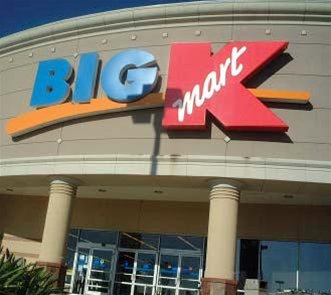 ≡
≡
Learn A Lesson From Kmart
Apr 1, 2002 by Sean Luce
February 2002 brought the collapse of Kmart, one of America's largest retailers. Long known for its "blue light specials," this retailing institution woke up the business world and, more important, the advertising world by filing for bankruptcy protection. What are advertisers and the Waltons (Wal-Mart) learning from this marketing blunder? Pass this on to your clients and prospects before it's too late!
Lesson #1: Research has shown that, when making their buying decisions, customers shop "price and item" (newspaper) 38 percent of the time and they shop "top of mind awareness" (Radio) 62 percent of the time. In many markets, small and large, newspaper sucks up 50-80 percent of an advertiser's dollar. Kmart's marketing strategy had been to run constant sales in newspapers with FSIs (free standing inserts). Only last year - after it was too late - did it add some sporadic broadcast advertising to its marketing mix. What kind of shoppers made the Kmart cash register ring? The company's positioning statement of "constant sales" typically brought in low-income shoppers or those who went to Kmart seeking only a sale and paying only the reduced price. This forced Kmart always to sell merchandise with an extremely low profit margin. In its marketing strategy (or lack thereof), by running only newspaper FSIs, Kmart was effectively bringing in the 38 percent of shoppers who came because of "price and item" sales; yet the strategy left behind 62 percent of consumers who thought of Kmart before any other mass merchandiser. Advertisers who spend more than 38 percent of their budget in the "fish wrap" are wasting valuable marketing dollars. In most cases, they need to flipflop their current ad budget to bring it in line with how the consumer shops. A good top-of-mind medium such as Radio should receive at least 62 percent, leaving no more than 38 percent for newspaper - and only that percentage for newspaper if the business is advertising to the 44-plus demo.
Lesson #2: What has Wal-Mart done since the Kmart bankruptcy announcement? They are stocking "designer labels" in their clothing sections and "Swiss watches and diamonds" in their jewelry departments. You now see Wal-Mart ads on TV and hear them more on the Radio, trying to attract the 62 percent of consumers that pay full price and will shop Wal-Mart regardless of perceived discounts.
Lesson #3: According to the Dallas Morning News, fast-food restaurant Sonic bought Dairy Queens in Louisiana, Texas, and Oklahoma because of a lack of advertising aggressiveness on Dairy Queen's part. In those markets, when was the last time you heard DQ on Radio?
Related Categories> Publications > Radio Ink




